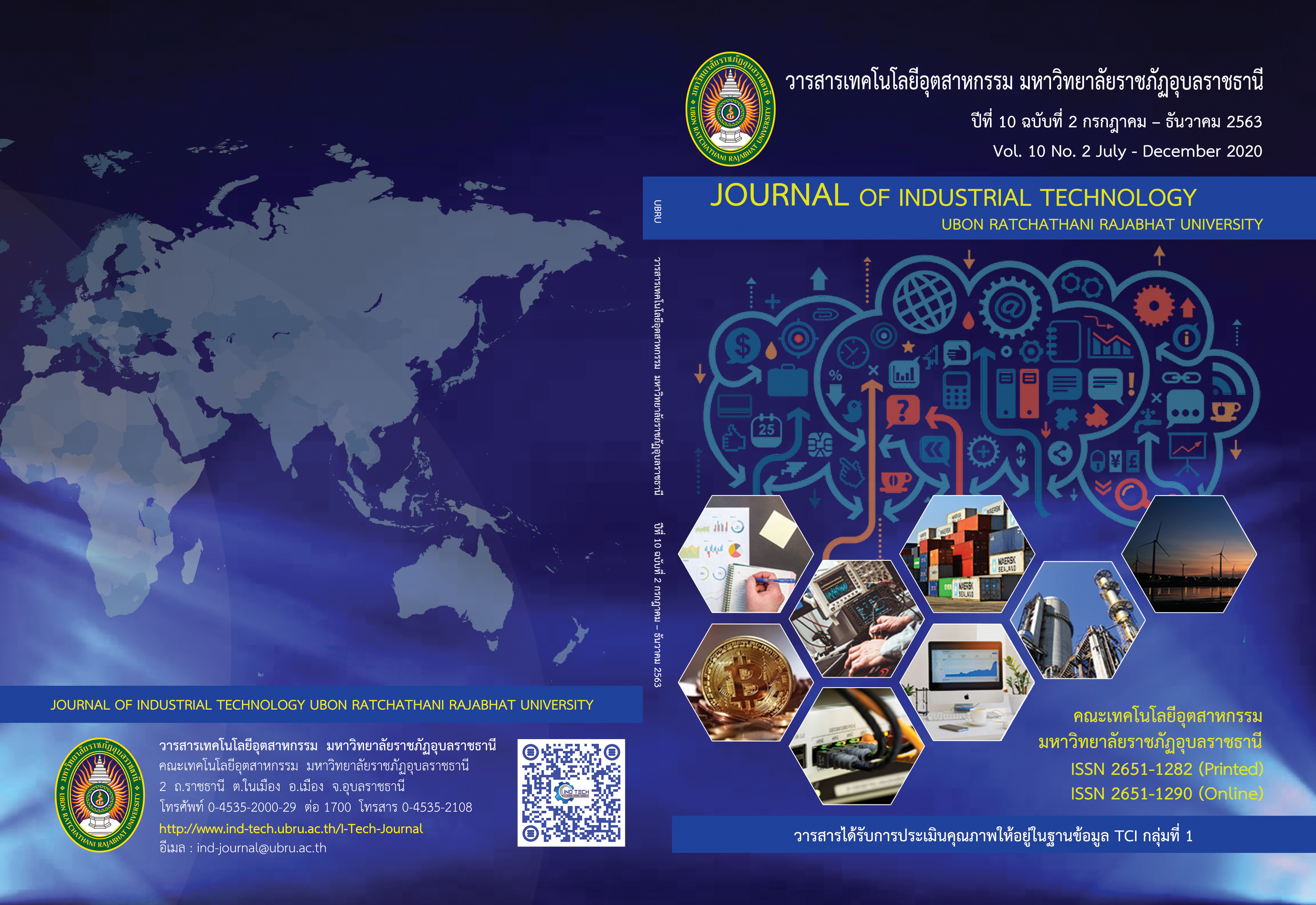Big Data Analytics for Tourism: A Case Study from Ubon Ratchathani Province, Thailand
Main Article Content
Abstract
The objectives of this study can be divided into three parts as follows: 1) to collect and perform sentiment analysis of tourists who visited tourist attractions in Ubon Ratchathani province from the tourist comments posted on online social networking. 2) to study the performance of an algorithm for sentiment analysis using deep learning. 3) to develop a software using Python and to visualize data via a web browser using Microsoft Power BI Desktop. This research collected a total of 16,950 comments by the tourists who commented on 26 tourist attractions in Ubon Ratchathani province from the online social networking sources. The comments were separated into two parts. For the first part, there are 13,560 comments used for creating a classifier model. The second part used 3,390 comments for testing the performance of the algorithm. The result showed that by using the Convolutional Neural Network (CNN) algorithm, the accuracy rate of
2-levels classification is 98%. For 5-levels classification, the accuracy rate is 42%.
Article Details
Articles published in Journal of Industrial Technology Ubon Ratchathani Rajabhat University both hard copy and electronically are belonged to the Journal.
References
Voice TV. Thailand’s tourism revenue reached rank 4 of the world [Internet]. 2018 [cited 2019 January 28]. Available from: https://voicetv.co.th/read/B3S3lm0of
Office of the Permanent Secretary, Ministry of Tourism and Sport. Important tourism situation summary in Q4 of 2016. Tourism Economic Review. 2016; 4(4): 17. (in Thai)
Laney D. 3D Data Management: Controlling Data Volume, Velocity and Variety [Internet]. 2012 [cited 2018 December 9]. Available from: https://blogs.gartner.com/doug-laney/ files/2012/
/ad949-3D-Data-Management-Controlling-Data-Volume-Velocity-and-Variety.pdf
The Apache Software Foundation. Apache Hadoop [Internet]. [cited 2018 December 9]. Available from: http://hadoop.apache.org/
Zhang X, LeCun Y. Text understanding from Scratch [Internet]. 2016 [cited 2018 December 9]. Available from: ArXiv:1502.01710v5 [cs.LG]
LeCun Y, Bottou L, Bemgio Y, Haffner P. Gradient-based learning applied to document recognition. Proceedings of the IEEE. 1998; 86(11): 2278–324.
LeCun Y, Boser BE, Denker JS, Henderson D, Howard RE, Hubbard WE, Jackel LD. Handwritten digit recognition with a back-propagation network. In Touretzky DS, editor. Advances in Neural Information Processing Systems 2 (NIPS 1989); 1989 November 27-30; Denver Colorado, USA. Morgan Kaufmann; 1990. p. 396-404
NECTEC. Pop S-Sense [Internet]. [cited 2018 May 08]. Available from: http://pop.ssense.in.th
NECTEC. S-Sense Tourism [Internet]. [cited 2018 May 08). Available from: http://ssense.in.th/tourism
Kim Y. Convolutional neural networks for sentence classification. Proceeding of the 2014 Conference on Empirical Methods in Natural Language Processing (EMNLP); 2014 October
-29; Doha, Qatar. Association for Computational Linguistics; 2014. p. 1746-51.
Mikolov T, Sutskever I, Chen K, Corrado GS, Dean J. Distributed representations of words and phrases and their compositionality. In Burges CJC, Bottou L, Welling M, Ghahramani Z, Weinburger KQ, editors. Neural information processing systems 2013 (NIPS 2013); 2013 December 5-8; Lake Tahoe, Nevada, United States. Neural information processing systems Foundation, Inc.; 2013. p. 3111–9.

